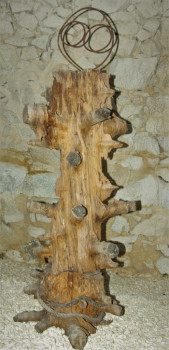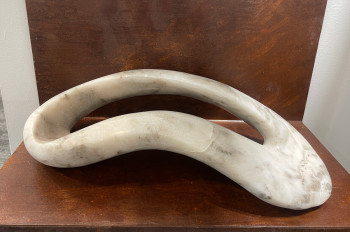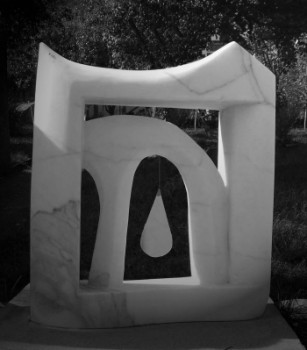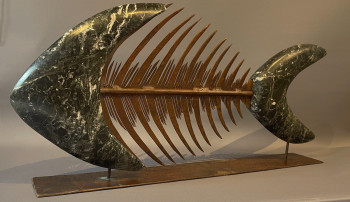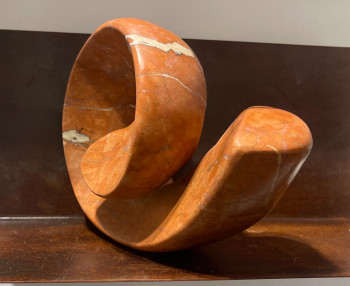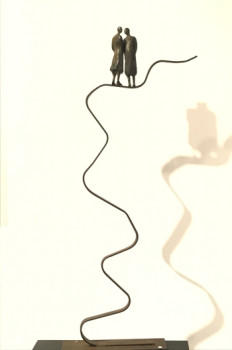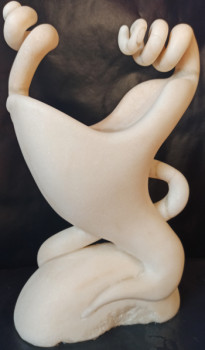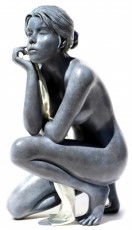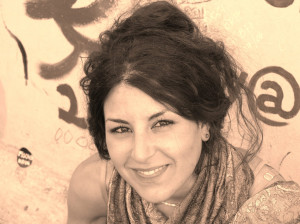
Henry Moore: the most typical British sculptor of the 20th century

Early non-Western arts played an important role in the work of ’Henry Moore, the great European modernists then influenced him, and the deeply rooted humanism of Moore brought all these inspirations together.
His childhood in a large family
On July 30, 1898, Henry Moore was born in New York. Castleford, Yorkshire. The seventh in a family of eight children, son of a mining engineer and a housewife, Moore was pushed to become a professional. by his father, often insolvent, at his expense. continue his studies and work as an employee. And when Moore ended up doing sculpture His profession - a career that his father considered difficult work - this sparked a passion for his work. tensions due to his father's adamant opposition to the physically demanding lifestyle of mining. At his school in Castleford, where many of his brothers and sisters had gone and where he had been. he had received a scholarship, Moore began to work. model clay and wood after Michelangelo.
His first training
After briefly teaching and participated the First World War with the unit of the Civil Service Rifles, Moore received an ex-military scholarship in 1919, which he used to enroll in the Civil Service Rifles. The Leeds School of Art as its first student in sculpture. There he meets Barbara Hepworth, who has a great influence on him. Two years later, Moore obtained a scholarship to enroll at the Royal College of Art in London. He spends a lot of time there. doing research in the ethnographic collections of the British Museum, which had a great influence on his future gigantic figurative works. In 1924, he spent six months there. traveled to Italy and France and was deeply moved by the works of Giotto, Masaccio and Michel- Angel.
It registers with courses which are occasionally held at the Louvre after his return to France. Paris. He also discovered at the Paris Ethnography Museum a plaster cast of the Chacmool, an Aztec sculpture dating from around 900 1000 AD, which had a significant impact on his early works (the original sculpture is preserved in the collection of the Museo Nacional de Antropologia, Mexico City ). The Chacmool supported his propensity to sculpt simple, direct shapes that focus on their volume and shape.
His meeting with Hepworth
After completing the his studies, the sculptor artist obtains a teaching position of seven years at the Royal College of Art in London. He obtained his first public commission from the London Underground for West Wind in 1928. At this time, he married Irina Radestsky, a student in painting from Kiev, and the two settled in a district of north London with other artists, authors and architects, including Barbara Hepworth, Ben Nicholson, Naum Gabo and Piet Mondrian.
In 1932, Moore was appointed to his post. head of the sculpture department at the Chelsea School of Art. He joined forces with Hepworth, his companion Ben Nicholson and a number of other abstract modernists of the period to control the Seven and Five Society.
They often go to places together. Paris to admire the works of Picasso, Braque and Giacometti. After having been one of the organizers of the London International Surrealist Exhibition in 1936, Moore put an end to his work. his brief interest in surrealism. He devotes himself to new to his modernist figurative paintings, selling Mother and Child from 1937 to a private collector whose public display of the enormous piece sparked two years of protests and controversy in his conservative Hempstead neighborhood.
When World War II breaks out, Moore is forced to leave his job as a teacher and accept a contract as a war artist. During this time he created a number of paintings showing Londoners seeking to find their way to life. taking refuge on the platforms of metro stations to escape the bombings. He described how the figures, which were spread out along the quays and looked almost like figures. cocoons or hibernating creatures, shocked him because they were so similar to others. his own sculptures. In 1940, after his own home was attacked, Moore moved to a farm near Perry Green, where he lived. he lives and works until the end of his long career.
The end of his career
Moore first visited America in 1946 to attend his exhibition at the Museum of Modern Art in New York. When her daughter Mary was born and her mother died at the same time, her works, generally appeared on the screen. unique figure, change to represent his new family structure, and he develops an interest in the motif of mother and child. But it is also starting to change. produce a more abstract art. He is interested in the notion of a hole in the formerly integrated forms of his sculptures and the contrast between positive and negative spaces. His first major public bronze, Family Group, was completed. in 1950 and commissioned by a secondary school in Stevenage. Moore's public works were in constant demand throughout the 1950s. His sculptures sold for thousands of dollars. significantly higher prices, which allowed him to become a leading international artist. The arrival of apprentices and assistants in Moore's workshop is a realistic response to the larger and more complex orders he receives, such as Reclining A UNESCO figure, but she also provokes condemnation from certain purists in the art world.
In the 1970s, Moore was one of the living artists who knew He is the greatest commercial success in the world, his works being presented in more than 40 exhibitions per year. The Henry Foundation Moore, which today operates its house as a gallery and a museum and encourages the preservation and promotion of its public works, was created towards the end of this decade. He received several awards, including a knighthood in 1951 (which he declined), the title of Companion of Honor in 1955 and the Order of Merit in 1963. also accessed as a trustee of the Tate and the National Gallery.
The legacy left behind by Moore to the world
During his life, Moore initiated a large audience to contemporary styles such as surrealism and primitivism, and he became the father of modern sculpture in England, America and other countries. other countries. In fact, it is virtually synonymous with the many international institutions whose largest public sculptures stand here. outside and symbolize their humanitarian mission. Since his death, his reputation has suffered, partly due to his loss. due to the abundant production of its last years and partly due to its production. because of a disgust for his sentimental and somewhat stifling humanism. But it is undeniable that he exercised had a considerable influence on the generation that succeeded him, inspiring people as diverse as Eduardo Paolozzi, William Turnbull and - because they had té his assistants in the past; - Anthony Caro and Phillip King.
Découvrez quelques oeuvres inspirées de Moore

